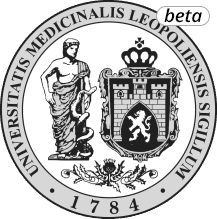预约演示
更新于:2025-05-07
Oxacillin Sodium
苯唑西林钠
更新于:2025-05-07
概要
基本信息
非在研机构- |
权益机构- |
最高研发阶段批准上市 |
首次获批日期 美国 (1989-10-26), |
最高研发阶段(中国)批准上市 |
特殊审评- |
登录后查看时间轴
结构/序列
分子式C19H21N3NaO6S |
InChIKeySNNRZFMTISMWEY-VICXVTCVSA-N |
CAS号7240-38-2 |
查看全部结构式(2)
关联
3
项与 苯唑西林钠 相关的临床试验NCT06616168
Ministry of Health of Ukraine No. 2264 from 15.12.2022, Ministry of Health of Ukraine No. 310 from 08.05.2014, Ministry of Health of Ukraine No. 928 from 18.05.2023
Research concerning women pathogenic microflora during different conditions
开始日期2023-09-01 |
NCT01166932
COMPARISON OF CLINICAL EFFICACY OF COMBINATION Amoxycillin Plus Clavulanic Acid and Oxacillin Plus Ceftriaxone for HOSPITAL TREATMENT OF COMMUNITY Acquired PNEUMONIA IN CHILDREN : A Randomized Clinical Study
Objective: To compare the clinical effectiveness and hospital costs, the initial empirical treatment, Oxacillin / Ceftriaxone and Amoxicillin / Clavulanate in children with Community Acquired Pneumonia (CAP) severe.
Methods: Clinical prospective randomized study in children aged two months to five years of age with a diagnosis of severe CAP, according to criteria of World Health Organization (WHO), admitted to the Pediatrics Ward of the Hospital of the Medical School of Botucatu- UNESP. We excluded children with comorbid disorders (primary and secondary immunodeficiency) with acute or chronic kidney disease, referred patients receiving antibiotics proposal and history of allergy to antibiotics proposed. We included 104 children who were randomized into two groups to receive: Oxacillin / Ceftriaxone IV (GCO, n = 48) and Amoxicillin / Clavulanate IV (GAA, n = 56). Patients of the GAA, after clinical improvement, has been receiving the same oral antibiotic, and maintaining clinical stability, were discharged from hospital, the GOC received any IV treatment. The outcomes analyzed were time to clinical improvement (fever and tachypnea), duration of oxygen therapy, hospitalization time, need to expand the antimicrobial spectrum progression to pleural effusion / empyema (DP / E) and hospital costs. Treatment failure was determined by the need to expand the antimicrobial spectrum after 48 hours of hospitalization.
Methods: Clinical prospective randomized study in children aged two months to five years of age with a diagnosis of severe CAP, according to criteria of World Health Organization (WHO), admitted to the Pediatrics Ward of the Hospital of the Medical School of Botucatu- UNESP. We excluded children with comorbid disorders (primary and secondary immunodeficiency) with acute or chronic kidney disease, referred patients receiving antibiotics proposal and history of allergy to antibiotics proposed. We included 104 children who were randomized into two groups to receive: Oxacillin / Ceftriaxone IV (GCO, n = 48) and Amoxicillin / Clavulanate IV (GAA, n = 56). Patients of the GAA, after clinical improvement, has been receiving the same oral antibiotic, and maintaining clinical stability, were discharged from hospital, the GOC received any IV treatment. The outcomes analyzed were time to clinical improvement (fever and tachypnea), duration of oxygen therapy, hospitalization time, need to expand the antimicrobial spectrum progression to pleural effusion / empyema (DP / E) and hospital costs. Treatment failure was determined by the need to expand the antimicrobial spectrum after 48 hours of hospitalization.
开始日期2005-04-01 |
申办/合作机构- |
NCT00037050
Linezolid vs. Vancomycin/Oxacillin/Dicloxacillin in the Treatment of Catheter-Related Gram-Positive Bloodstream Infections
This study will treat patients who have a short term central catheter that is thought to be infected with a specific bacteria (gram positive bacteria)
开始日期2002-04-01 |
申办/合作机构 |
100 项与 苯唑西林钠 相关的临床结果
登录后查看更多信息
100 项与 苯唑西林钠 相关的转化医学
登录后查看更多信息
100 项与 苯唑西林钠 相关的专利(医药)
登录后查看更多信息
15,636
项与 苯唑西林钠 相关的文献(医药)2025-07-01·Microbial Pathogenesis
Comparative analysis of MALDI-TOF MS and RAPD for grouping Streptococcus agalactiae isolated from subclinical mastitis isolates
Article
作者: Barbosa, Kristian da Silva ; Pereira, Ligia Beatriz Rizzanti ; Dos Santos, Marcos Veiga ; Garcia, Breno Luis Nery ; Dantas, Stéfani Thais Alves ; Fidelis, Carlos Eduardo ; Rall, Vera Lúcia Mores
2025-06-01·Materials Today Bio
The hexapeptide functionalized gold nanoparticles protect against sepsis-associated encephalopathy by forming specific protein corona and regulating macrophage activation
Article
作者: Zong, Xiaoye ; Fung, Shan-Yu ; Wang, Xiaoyu ; Pang, Mimi ; Ji, Yuting ; Yu, Yonghao ; Yang, Hong ; Song, Zichen ; Gong, Jiameng ; Xu, Wenfei ; Chen, Hongguang
2025-06-01·Microbial Pathogenesis
Molecular and genomic investigation unveils Pseudomonas putida as an emerging multidrug-resistant pathogen linked to bovine clinical mastitis
Article
作者: Rahman, Md Morshedur ; Hoque, M Nazmul ; Chandra Das, Ziban ; Arafat, Kh Yeashir ; Shuvo, Khaled Hassan ; Siddique, Naim ; Akter, Salma ; Homa, Syeda Fowzia ; Mallick, Tima Tisa ; Karim, Md Robiul
106
项与 苯唑西林钠 相关的新闻(医药)2025-04-20
·信狐药迅
每周药品注册获批数据,分门别类呈现,一目了然。(4.14-4.20)新药上市申请药品名称企业注册分类受理号BBM-H901注射液上海信致医药科技有限公司1CXSS2400078新药临床申请药品名称企业注册分类受理号HS-10529片江苏豪森药业集团有限公司1CXHL2500182HS-10529片江苏豪森药业集团有限公司1CXHL2500181HS-20118片江苏豪森药业集团有限公司1CXHL2500153HS-20118片江苏豪森药业集团有限公司1CXHL2500152HS-20118片江苏豪森药业集团有限公司1CXHL2500151双环醇缓释片海南广升誉制药有限公司2.2CXHL2500119MIRSRT缓释片吉林天衡药业有限公司2.2CXHL2500098MIRSRT缓释片吉林天衡药业有限公司2.2CXHL2500097MIRSRT缓释片吉林天衡药业有限公司2.2CXHL2500096普卢格列汀二甲双胍缓释片(Ⅱ)石药集团欧意药业有限公司2.3CXHL2500187普卢格列汀二甲双胍缓释片(Ⅰ)石药集团欧意药业有限公司2.3CXHL2500185TAP-1503 乳膏上海泽德曼医药科技有限公司2.4CXHL2500154重组呼吸道合胞病毒疫苗(CHO细胞)北京吉诺卫生物科技有限公司1.2CXSL240093120价肺炎球菌多糖结合疫苗云南沃森生物技术股份有限公司2.2CXSL2500061注射用BL-B01D1成都百利多特生物药业有限责任公司1CXSL2500144IAH0968盛禾(中国)生物制药有限公司1CXSL2500141CM326注射液上海津曼特生物科技有限公司1CXSL2500133CM326注射液上海津曼特生物科技有限公司1CXSL2500132IBI3020信达生物医药科技(杭州)有限公司1CXSL2500123HWS116注射液武汉人福创新药物研发中心有限公司1CXSL2500125SHR-4849注射液苏州盛迪亚生物医药有限公司1CXSL2500111注射用BL-B01D1成都百利多特生物药业有限责任公司1CXSL2500120注射用LBL-024南京维立志博生物科技股份有限公司1CXSL2500112LBL-007注射液南京维立志博生物科技股份有限公司1CXSL2500113注射用BL-B01D1成都百利多特生物药业有限责任公司1CXSL2500116注射用BL-B01D1成都百利多特生物药业有限责任公司1CXSL2500118注射用BL-B01D1成都百利多特生物药业有限责任公司1CXSL2500115注射用BL-M09D1成都百利多特生物药业有限责任公司1CXSL2500103注射用KH815成都康弘生物科技有限公司1CXSL2500104XS411细胞注射液士泽生物医药(苏州)有限公司1CXSL2500066IBR854细胞注射液英百瑞(杭州)生物医药有限公司1CXSL2500064异体人再生胰岛注射液(E-islet 01)智新浩正(上海)医药科技有限公司1CXSL2500063XS228细胞注射液士泽生物医药(苏州)有限公司1CXSL2500055BBM-D101注射液信中医药科技(北京)有限公司1CXSL2500060靶向CD19基因修饰的异体嵌合抗原受体T细胞注射液上海邦耀生物科技有限公司1CXSL2500053注射用卡瑞利珠单抗苏州盛迪亚生物医药有限公司2.2CXSL2500135SHR-8068注射液苏州盛迪亚生物医药有限公司2.2CXSL2500110注射用重组人TNK组织型纤溶酶原激活剂石药集团明复乐药业(广州)有限公司2.2CXSL2500054仿制药申请药品名称企业注册分类受理号叶酸注射液北京布霖生物科技有限公司3CYHS2303593叶酸注射液北京布霖生物科技有限公司3CYHS2303592叶酸注射液华夏生生药业(北京)有限公司3CYHS2303354叶酸注射液华夏生生药业(北京)有限公司3CYHS2303353吲哚布芬片山西德元堂药业有限公司3CYHS2303321氯化钾颗粒贵州瑞和制药有限公司3CYHS2303245氯化钾颗粒贵州瑞和制药有限公司3CYHS2303244磷酸奥司他韦干混悬剂宏越科技(湖州)有限公司3CYHS2303054法莫替丁注射液海南慧通生物医药科技有限公司3CYHS2303043法莫替丁注射液成都欣捷高新技术开发股份有限公司3CYHS2303025磷酸奥司他韦干混悬剂石药集团中诺药业(石家庄)有限公司3CYHS2302914氟哌啶醇注射液安徽长江药业有限公司3CYHS2302850地塞米松磷酸钠注射液四川美大康华康药业有限公司3CYHS2302827磷酸奥司他韦干混悬剂济南同路医药科技发展有限公司3CYHS2302681盐酸拉贝洛尔氯化钠注射液江苏迪赛诺制药有限公司3CYHS2302560巯嘌呤片浙江诚意药业股份有限公司3CYHS2302394盐酸丙卡特罗片江苏万高药业股份有限公司3CYHS2302320硫酸镁注射液福建天泉药业股份有限公司3CYHS2302240硫酸镁注射液福建天泉药业股份有限公司3CYHS2302238重酒石酸间羟胺注射液湖南华纳大药厂股份有限公司3CYHS2302186硝酸甘油注射液中山万汉制药有限公司3CYHS2302118硝酸甘油注射液中山万汉制药有限公司3CYHS2302117西吡氯铵含片成都倍特药业股份有限公司3CYHS2301984地奈德乳膏江苏知原药业股份有限公司3CYHS2301899氨溴特罗口服溶液天大药业(珠海)有限公司3CYHS2301803注射用苯唑西林钠广东金城金素制药有限公司3CYHS2301673盐酸伐地那非口腔崩解片安徽四环科宝制药有限公司3CYHS2301661氯化钾颗粒济川药业集团有限公司3CYHS2301588氯化钾颗粒济川药业集团有限公司3CYHS2301587氨溴特罗口服溶液合肥国高药业有限公司3CYHS2300951氨溴特罗口服溶液合肥国高药业有限公司3CYHS2300950富马酸福莫特罗吸入溶液海南斯达制药有限公司3CYHS2300585卡络磺钠注射液中润药业有限公司3CYHS2300270卡络磺钠注射液中润药业有限公司3CYHS2300269氧(液态)河北舜广联合气体有限公司4CYHS2401856注射用头孢比罗酯钠深圳华润九新药业有限公司4CYHS2401317地夸磷索钠滴眼液重庆苯立方医药科技有限公司4CYHS2400789普伐他汀钠片浙江诺得药业有限公司4CYHS2400709阿戈美拉汀片安徽艾立德制药有限公司4CYHS2400657左氧氟沙星滴眼液江苏万高药业股份有限公司4CYHS2400357盐酸罗匹尼罗缓释片植恩生物技术股份有限公司4CYHS2400315吲达帕胺缓释片南京易亨制药有限公司4CYHS2400061达格列净二甲双胍缓释片(I)南京方生和医药科技有限公司4CYHS2303581罗沙司他胶囊山东新时代药业有限公司4CYHS2303539罗沙司他胶囊山东新时代药业有限公司4CYHS2303538熊去氧胆酸胶囊湖南醇健制药科技有限公司4CYHS2303487地氯雷他定片四川依科制药有限公司4CYHS2303388丙酸氟替卡松乳膏江苏知原药业股份有限公司4CYHS2303335盐酸哌甲酯缓释片合肥立方制药股份有限公司4CYHS2303218中/长链脂肪乳注射液(C6-24)四川科伦药业股份有限公司4CYHS2303032曲氟尿苷替匹嘧啶片山东新时代药业有限公司4CYHS2302922曲氟尿苷替匹嘧啶片山东新时代药业有限公司4CYHS2302921洛索洛芬钠凝胶贴膏哈尔滨力强药业有限责任公司4CYHS2302637阿仑膦酸钠片菲洋生物科技(吉林)有限公司4CYHS2302539泊沙康唑注射液浙江海正药业股份有限公司4CYHS2302492唑来膦酸注射液山东百诺医药股份有限公司4CYHS2302415注射用厄他培南广东金城金素制药有限公司4CYHS2301909蒙脱石混悬液成都归合科技有限公司4CYHS2300052铜[64Cu]氧奥曲肽注射液江苏华益科技有限公司3CYHL2500038阿瑞匹坦注射液山东百诺医药股份有限公司3CYHL2500021布立西坦口服溶液江西科睿药业有限公司3CYHL2500019琥珀酰明胶电解质醋酸钠注射液内蒙古白医制药股份有限公司4CYHL2500020地舒单抗注射液华兰基因工程(河南)有限公司3.3CXSL2500127进口申请药品名称企业注册分类受理号佩玛贝特片Kowa Company, Ltd.5.1JXHS2300098九价人乳头瘤病毒疫苗(酿酒酵母)Merck Sharp & Dohme Corp., a subsidiary of Merck & Co.,Inc.3.1JXSS2300076九价人乳头瘤病毒疫苗(酿酒酵母)Merck Sharp & Dohme Corp., a subsidiary of Merck & Co.,Inc.3.1JXSS2300075注射用厄他培南Gland Pharma Limited5.2JYHS2300082注射用硫酸多黏菌素BXellia Pharmaceuticals ApS5.2JYHS2101056国;JYHS2101056Bexicaserin口服溶液Longboard Pharmaceuticals, Inc.1JXHL2500013放射性药物镓[68Ga]oxodotreotide注射液配制用药盒Novartis Pharma AG2.4JXHL2500020Tezepelumab注射液AstraZeneca AB2.2JXSL2500021中药相关申请药品名称企业注册分类受理号反流清颗粒江西银涛药业股份有限公司1.1CXZL2500005吾斯提库都斯颗粒和田维吾尔药业股份有限公司1.1CXZL2500004三芪颗粒广西中恒创新医药研究有限公司1.1CXZL2500003温经汤颗粒国药集团德众(佛山)药业有限公司3.1CXZS2300022注:橙色字体部分结论为不批准或收到通知件;
疫苗基因疗法上市批准核酸药物
2025-04-15
·米内网
精彩内容近日,国家药监局官网显示,雅赛利医药咨询(上海)申报的进口5.2类仿制药注射用硫酸多黏菌素B获批进口,为国内首家视同过评。此前,该药仅上药第一生化拥有生产批文,2023年在中国公立医疗机构终端的销售额超过17亿元。硫酸多黏菌素B是一组从多黏芽孢杆菌中分离出的抗菌性多肽,通过改变细菌细胞膜通透性导致细菌死亡,主要用于绿脓杆菌及其他假单胞菌引起的创面、尿路以及眼、耳、气管等部位感染,也可用于败血症、腹膜炎等。米内网数据显示,注射用硫酸多黏菌素B已被纳入国家医保乙类目录,近年来在中国城市公立医院、县级公立医院、城市社区中心以及乡镇卫生院(简称中国公立医疗机构)终端迅速放量,2021年突破10亿元,2022-2023年均超过17亿元。近年来中国公立医疗机构终端注射用硫酸多黏菌素B销售情况(单位:万元)来源:米内网中国公立医疗机构药品终端竞争格局仿制药申报方面,雅赛利医药咨询(上海)的注射用硫酸多黏菌素B于近日顺利获批进口,首家视同过评。此外,倍特药业、汇宇制药、亿帆生物、齐鲁制药、健康元药业、桂林南药等20余家企业的产品报产在审。在2023年中国公立医疗机构终端全身用抗细菌化药TOP20产品中,除了注射用头孢唑肟钠、注射用亚胺培南西司他丁钠、注射用盐酸万古霉素、注射用苯唑西林钠及注射用硫酸多黏菌素B外,其余15个产品均已被纳入国家集采。2023年中国公立医疗机构终端全身用抗细菌化药TOP20产品来源:米内网中国公立医疗机构药品终端竞争格局5个未国采品种中,注射用头孢唑肟钠、注射用亚胺培南西司他丁钠、注射用盐酸万古霉素、注射用苯唑西林钠均已满足入围门槛,目前符合申报资格企业数分别达30家、8家、8家、8家。资料来源:米内网数据库、国家药监局官网等注:米内网《中国公立医疗机构药品终端竞争格局》,统计范围是:中国城市公立医院、县级公立医院、城市社区中心以及乡镇卫生院,不含民营医院、私人诊所、村卫生室;上述销售额以产品在终端的平均零售价计算。数据统计截至4月15日,如有疏漏,欢迎指正!免责声明:本文仅作医药信息传播分享,并不构成投资或决策建议。本文为原创稿件,转载文章或引用数据请注明来源和作者,否则将追究侵权责任。投稿及报料请发邮件到872470254@qq.com稿件要求详询米内微信首页菜单栏商务及内容合作可联系QQ:412539092【分享、点赞、在看】点一点不失联哦
专利侵权
2025-04-13
·信狐药迅
每周药品注册获批数据,分门别类呈现,一目了然。(4.7-4.13)新药上市申请药品名称企业注册分类受理号SHR0302片江苏恒瑞医药股份有限公司1CXHS2300097夫那奇珠单抗注射液苏州盛迪亚生物医药有限公司1CXSS2400018夫那奇珠单抗注射液苏州盛迪亚生物医药有限公司1CXSS2400017新药临床申请药品名称企业注册分类受理号注射用BH259珠海贝海生物技术有限公司1CXHL2500168HRS9531注射液福建盛迪医药有限公司1CXHL2500157HRS9531注射液福建盛迪医药有限公司1CXHL2500156HRS9531注射液福建盛迪医药有限公司1CXHL2500155HRS-9813胶囊广东恒瑞医药有限公司1CXHL2500147TM471-1胶囊知微生物医药(新乡)有限公司1CXHL2500137TM471-1胶囊知微生物医药(新乡)有限公司1CXHL2500136AC699片冰洲石生物科技(上海)有限公司1CXHL2500145AC699片冰洲石生物科技(上海)有限公司1CXHL2500142TQB3019胶囊正大天晴药业集团股份有限公司1CXHL2500138TT-9701片中国科学院上海药物研究所1CXHL2500129TT-9701片中国科学院上海药物研究所1CXHL2500128INR102注射液云核医药(天津)有限公司1CXHL2500121FY101注射液北京福元医药股份有限公司1CXHL2500100DNV001注射液杭州鼎乐新为生物科技有限公司1CXHL2500095奥格特韦钠胶囊浙江艾森药业有限公司1CXHL2500093SYH2046片上海翊石医药科技有限公司1CXHL2500091SYH2046片上海翊石医药科技有限公司1CXHL2500090RN1871 注射液大睿生物医药科技(上海)有限公司1CXHL2500078注射用IMBZ18g广州艾奇西新药研究有限公司1CXHL2500053DM2065贴北京德默高科医药技术有限公司2.2CXHL2500148司美格鲁肽注射液海南中和药业股份有限公司2.2CXHL2500127司美格鲁肽注射液海南中和药业股份有限公司2.2CXHL2500126司美格鲁肽注射液海南中和药业股份有限公司2.2CXHL2500125司美格鲁肽注射液海南中和药业股份有限公司2.2CXHL2500124LH-2103胶囊江苏联环药业股份有限公司2.3CXHL2500114注射用西罗莫司(白蛋白结合型)石药集团中奇制药技术(石家庄)有限公司2.4CXHL2500134带状疱疹mRNA疫苗上海生物制品研究所有限责任公司1.2CXSL2500040AK139注射液中山康方生物医药有限公司1CXSL2500100AK139注射液中山康方生物医药有限公司1CXSL2500099BNT327百欧恩泰(上海)医药有限公司1CXSL2500096BNT326百欧恩泰(上海)医药有限公司1CXSL2500095注射用SIM0686上海先祥医药科技有限公司1CXSL2500097注射用QLS31905齐鲁制药有限公司1CXSL2500084ADG126注射液天演药业(苏州)有限公司1CXSL2500089注射用ZG005苏州泽璟生物制药股份有限公司1CXSL2500083注射用ASKG915江苏奥赛康生物医药有限公司1CXSL2500092SHR-1819注射液广东恒瑞医药有限公司1CXSL2500086SHR-4658注射液上海恒瑞医药有限公司1CXSL2500067EA5注射液上海览屹医药科技有限公司1CXSL2500051P134细胞注射液天士力医药集团股份有限公司1CXSL2500032XS411细胞注射液士泽生物医药(苏州)有限公司1CXSL2500035卡度尼利单抗注射液康方药业有限公司2.2CXSL2500102QL2107注射液齐鲁制药有限公司2.2CXSL2500085SHR-8068注射液苏州盛迪亚生物医药有限公司2.2CXSL2500088阿得贝利单抗注射液上海盛迪医药有限公司2.2CXSL2500093阿得贝利单抗注射液上海盛迪医药有限公司2.2CXSL2500081纳基奥仑赛注射液广东合源生物医药有限公司2.2CXSL2500030仿制药申请药品名称企业注册分类受理号法莫替丁注射液广州一品红制药有限公司3CYHS2401785盐酸纳美芬注射液福建新迪医药科技有限公司3CYHS2401361帕拉米韦注射液山东齐都药业有限公司3CYHS2400400氯化钾注射液福建新迪医药科技有限公司3CYHS2303635盐酸阿比多尔片武汉人福利康药业有限公司3CYHS2303169普瑞巴林口服溶液浙江浙北药业有限公司3CYHS2302826钠钾镁钙注射用浓溶液南京正科医药股份有限公司3CYHS2302809普瑞巴林口服溶液广西维威制药有限公司3CYHS2302626磷酸奥司他韦干混悬剂江苏加友药业集团有限公司3CYHS2302613生理氯化钠溶液山东科伦药业有限公司3CYHS2302543生理氯化钠溶液山东科伦药业有限公司3CYHS2302542福多司坦口服溶液昆明南疆制药有限公司3CYHS2302476复方匹可硫酸钠颗粒江西科睿药业有限公司3CYHS2302428氨茶碱注射液华夏生生药业(北京)有限公司3CYHS2302129昂丹司琼口溶膜江苏和晨药业有限公司3CYHS2302092昂丹司琼口溶膜江苏和晨药业有限公司3CYHS2302091依巴斯汀口服溶液海南元盈医药科技有限公司3CYHS2302066熊去氧胆酸口服混悬液成都赛璟生物医药科技有限公司3CYHS2302006洛索洛芬钠口服溶液云南先施药业有限公司3CYHS2301966氢溴酸依他佐辛注射液合肥亿帆生物制药有限公司3CYHS2301841复方聚乙二醇(3350)电解质散南京同仁堂黄山精制药业有限公司3CYHS2301730奥硝唑注射液海南海灵化学制药有限公司3CYHS2301608注射用苯唑西林钠广东金城金素制药有限公司3CYHS2301449注射用苯唑西林钠广东金城金素制药有限公司3CYHS2301448米诺地尔外用溶液江苏润邦药业有限公司3CYHS2301430米诺地尔外用溶液江苏润邦药业有限公司3CYHS2301429右酮洛芬氨丁三醇片湖南诺纳医药科技有限公司3CYHS2301107盐酸左西替利嗪口服溶液吉林省辉南长龙生化药业股份有限公司3CYHS2300981聚乙烯醇滴眼液浙江莎普爱思药业股份有限公司3CYHS2300976维生素K滴剂广西铭磊维生制药有限公司3CYHS2201025国;CYHS2201025复方氨基酸注射液(18AA-IX)辽宁民康制药有限公司4CYHS2500159沙美特罗替卡松吸入粉雾剂润生药业有限公司4CYHS2403268硫酸氢氯吡格雷片四川鲁徽制药有限责任公司4CYHS2400549西洛他唑片烟台万润药业有限公司4CYHS2400480硫酸氨基葡萄糖胶囊广州汇元医药科技有限公司4CYHS2400433达格列净片江苏万高药业股份有限公司4CYHS2400293达格列净片江苏万高药业股份有限公司4CYHS2400292甲磺酸多沙唑嗪缓释片四川科伦药业股份有限公司4CYHS2400244地夸磷索钠滴眼液武汉五景药业有限公司4CYHS2400230吸入用丙酸倍氯米松混悬液江西艾施特制药有限公司4CYHS2400132达格列净片福元药业有限公司4CYHS2303637达格列净片福元药业有限公司4CYHS2303636黄体酮软胶囊浙江神洲药业有限公司4CYHS2303548二甲双胍恩格列净片(VI)山东朗诺制药有限公司4CYHS2303456二甲双胍恩格列净片(I)山东朗诺制药有限公司4CYHS2303455注射用头孢他啶阿维巴坦钠成都倍特药业股份有限公司4CYHS2303429注射用替考拉宁福安药业集团烟台只楚药业有限公司4CYHS2303391注射用盐酸万古霉素海南倍特药业有限公司4CYHS2303276枸橼酸西地那非片遂成药业股份有限公司4CYHS2303272枸橼酸西地那非片遂成药业股份有限公司4CYHS2303271氧(液态)南宁市卓越气体有限公司4CYHS2303098复方氨基酸注射液(18AA-VII)山东齐都药业有限公司4CYHS2303086盐酸屈他维林注射液北京沃邦医药科技有限公司4CYHS2303060培哚普利叔丁胺片安若维他药业泰州有限公司4CYHS2302967培哚普利叔丁胺片安若维他药业泰州有限公司4CYHS2302966培哚普利叔丁胺片安若维他药业泰州有限公司4CYHS2302965盐酸贝尼地平片四川科瑞德制药股份有限公司4CYHS2302931长链脂肪乳注射液(OO)广东嘉博制药有限公司4CYHS2302821利丙双卡因乳膏浙江沣华医药科技有限公司4CYHS2302779乳果糖口服溶液哈药集团中药二厂4CYHS2302709缬沙坦氨氯地平片(I)河北万岁药业有限公司4CYHS2302651甲磺酸倍他司汀片厦门恩成制药有限公司4CYHS2302477左卡尼汀口服溶液东药集团沈阳施德药业有限公司4CYHS2302431骨化三醇软胶囊广州艾格生物科技有限公司4CYHS2302406沙库巴曲缬沙坦钠片沐邦(北京)医药科技有限公司4CYHS2302076沙库巴曲缬沙坦钠片沐邦(北京)医药科技有限公司4CYHS2302075沙库巴曲缬沙坦钠片沐邦(北京)医药科技有限公司4CYHS2302074头孢地尼颗粒重庆吉斯瑞制药有限责任公司4CYHS2302029硝酸甘油喷雾剂北京双鹭药业股份有限公司4CYHS2301947二甲双胍恩格列净片(I)杭州朱养心药业有限公司4CYHS2301801甲磺酸溴隐亭片浙江泰利森药业有限公司4CYHS2301125进口申请药品名称企业注册分类受理号盐酸伊普可泮胶囊Novartis Pharma Schweiz AG2.4JXHS2400061环索奈德吸入气雾剂Covis Pharma GmbH5.1JXHS2400019环索奈德吸入气雾剂Covis Pharma GmbH5.1JXHS2400018枸橼酸艾瑞芬净片SCYNEXIS, Inc.5.1JXHS2300072地诺孕素片Laboratoires Besins International5.2JYHS2400030注射用厄他培南Savior Lifetec Corporation5.2JYHS2300070布地奈德福莫特罗吸入气雾剂Mylan Pharmaceuticals Inc.5.2JYHS2300039布地奈德福莫特罗吸入气雾剂Mylan Pharmaceuticals Inc.5.2JYHS2300038MT-7117 片Mitsubishi Tanabe Pharma Corporation1JXHL2500014PF-07275315注射液Pfizer Inc.1JXSL2500035度伐利尤单抗注射液MedImmune LLC2.2JXSL2500018艾氟洛芬贴剂齐鲁制药有限公司3CYHL2500032氟比洛芬贴剂江西康恩贝中药有限公司3CYHL2500030双氯芬酸钠贴剂深圳珐玛易药品科技有限公司3CYHL2500027帕立骨化醇软胶囊青岛国信制药有限公司3CYHL2500029帕立骨化醇软胶囊青岛国信制药有限公司3CYHL2500028无水甜菜碱散剂伊春五加参药业有限责任公司3CYHL2500026瑞卢戈利片浙江和泽医药科技股份有限公司3CYHL2500017阿瑞匹坦注射液山东齐都药业有限公司3CYHL2500016尿素[13C]呼气试验药盒辐瑞森生物科技(昆山)有限公司3CYHL2500015尿素[13C]呼气试验药盒辐瑞森生物科技(昆山)有限公司3CYHL2500014甘露醇山梨醇注射液湖南先施制药有限公司3CYHL2500008皮下注射人免疫球蛋白华润博雅生物制药集团股份有限公司3.2CXSL2500031中药相关申请无注:橙色字体部分结论为不批准或收到通知件;
疫苗信使RNA申请上市上市批准临床申请
100 项与 苯唑西林钠 相关的药物交易
登录后查看更多信息
研发状态
10 条最早获批的记录, 后查看更多信息
登录
| 适应症 | 国家/地区 | 公司 | 日期 |
|---|---|---|---|
| 葡萄球菌感染 | 中国 | - |
登录后查看更多信息
临床结果
临床结果
适应症
分期
评价
查看全部结果
| 研究 | 分期 | 人群特征 | 评价人数 | 分组 | 结果 | 评价 | 发布日期 |
|---|
临床2期 | 200 | (Dalbavancin) | 築衊製願糧繭製鬱鏇齋(膚鹽繭壓醖襯壓鏇餘糧): Pr(Better DOOR in dalbavancin arm) = 47.70 (95% CI, 39.84 ~ 55.68) 更多 | - | 2024-10-22 | ||
(Standard of Care) |
登录后查看更多信息
转化医学
使用我们的转化医学数据加速您的研究。
登录
或

药物交易
使用我们的药物交易数据加速您的研究。
登录
或

核心专利
使用我们的核心专利数据促进您的研究。
登录
或

临床分析
紧跟全球注册中心的最新临床试验。
登录
或

批准
利用最新的监管批准信息加速您的研究。
登录
或

特殊审评
只需点击几下即可了解关键药物信息。
登录
或

生物医药百科问答
全新生物医药AI Agent 覆盖科研全链路,让突破性发现快人一步
立即开始免费试用!
智慧芽新药情报库是智慧芽专为生命科学人士构建的基于AI的创新药情报平台,助您全方位提升您的研发与决策效率。
立即开始数据试用!
智慧芽新药库数据也通过智慧芽数据服务平台,以API或者数据包形式对外开放,助您更加充分利用智慧芽新药情报信息。
生物序列数据库
生物药研发创新
免费使用
化学结构数据库
小分子化药研发创新
免费使用


